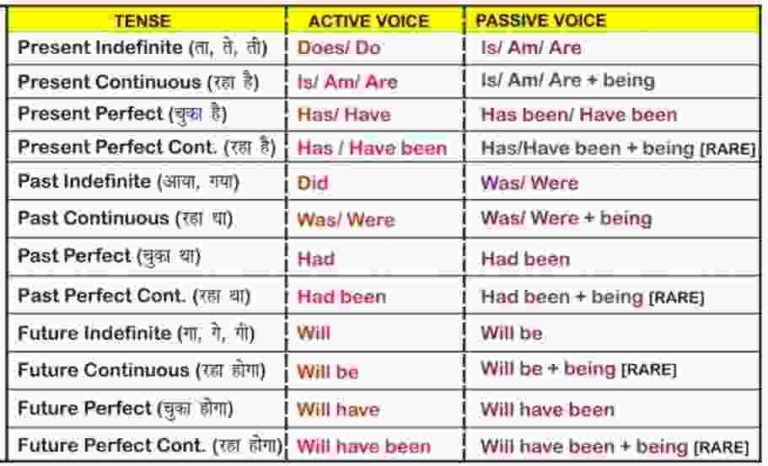Active voice and passive voice are two different ways in which a sentence can be structured. Active voice is when the subject of the sentence performs the action, while passive voice is when the subject of the sentence receives the action. Understanding the difference between the two is essential for clear and effective communication.
Using active voice in writing is generally preferred because it is more direct and engaging. It allows the reader to easily understand who is performing the action in the sentence. On the other hand, passive voice can be vague and less engaging, as it often obscures the subject of the sentence.
Active Voice and Passive Voice Chart
| Active Voice | Passive Voice |
|---|---|
| The cat chased the mouse. | The mouse was chased by the cat. |
| The teacher praised the students. | The students were praised by the teacher. |
| I will finish the project tomorrow. | The project will be finished by me tomorrow. |
As seen in the chart above, the same action is expressed in both active and passive voice. However, the structure of the sentence changes, and the focus shifts from the subject to the object of the action. It is important to choose the appropriate voice based on the context and clarity of the sentence.
When writing, it is essential to be mindful of using active voice whenever possible to ensure clear and concise communication. Passive voice can be used in certain situations, such as when the subject is unknown or when the focus is on the action rather than the doer. However, overusing passive voice can make writing less engaging and harder to follow.
By understanding the differences between active voice and passive voice, writers can effectively convey their message and engage their readers. Practice using both voices in different contexts to become more proficient in choosing the most appropriate voice for each situation.
In conclusion, active voice and passive voice are two distinct ways of structuring sentences that can greatly impact the clarity and effectiveness of communication. By utilizing active voice whenever possible and understanding the nuances of passive voice, writers can enhance their writing skills and engage their audience more effectively.
